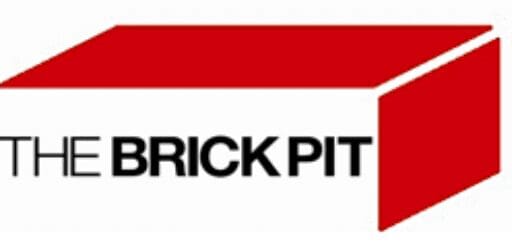Bricks have been a cornerstone of construction for centuries, offering durability, thermal efficiency, and aesthetic appeal. In Australia, the brick manufacturing process has evolved to incorporate modern technologies while maintaining traditional craftsmanship. This article delves into the detailed steps involved in brick production in Australia, highlighting the role of companies like The Brick Pit in promoting sustainable practices through the use of recycled bricks.
The Brick Manufacturing Process in Australia
The production of bricks in Australia involves several key stages:
- Clay Extraction and Preparation
- Moulding
- Drying
- Firing
- Cooling and Packaging
1. Clay Extraction and Preparation
The journey of brick manufacturing begins with the extraction of raw materials. Clay, the primary ingredient, is sourced from quarries and transported to manufacturing facilities. Upon arrival, the clay undergoes a series of preparation steps:
- Unsoiling: The top layer of soil, which may contain impurities, is removed to access pure clay beneath.
- Digging: The cleaned clay is excavated and spread out to weather, allowing it to break down naturally.
- Cleaning: Stones, roots, and other foreign materials are removed to ensure a consistent texture.
- Blending: Different types of clay may be mixed to achieve the desired properties for the final product.
- Tempering: Water is added to the clay, and the mixture is left to mature, enhancing its plasticity for moulding.
These preparation steps are crucial for producing high-quality bricks with uniform characteristics.
2. Moulding
Once the clay is adequately prepared, it is shaped into bricks through moulding. In Australia, two primary methods are employed:
- Hand Moulding: Traditional and labor-intensive, this method involves manually pressing clay into wooden or metal moulds. Hand-moulded bricks often exhibit unique textures and slight variations, adding character to structures.
- Machine Moulding: Modern manufacturing predominantly uses machines to extrude clay through a die, cutting it into bricks of uniform size and shape. This method enhances efficiency and consistency in large-scale production.
3. Drying
After moulding, the wet bricks contain a significant amount of moisture that must be removed before firing. The drying process involves:
- Air Drying: Bricks are stacked in well-ventilated areas, allowing natural air circulation to remove moisture over several days.
- Kiln Drying: To expedite the process, bricks may be placed in drying chambers with controlled temperatures and humidity levels, reducing drying time and minimizing the risk of defects.
Proper drying is essential to prevent cracks and warping during firing.
4. Firing
Firing is a critical stage where bricks gain their strength and durability. In Australia, several types of kilns are used:
- Down Draught Kilns: Traditional kilns where heat circulates from the top down, ensuring even firing.
- Hoffman Kilns: Continuous kilns with a series of chambers, allowing for efficient mass production.
- Tunnel Kilns: Modern kilns where bricks move through a long, tunnel-like chamber, experiencing gradual temperature changes for uniform firing.
Bricks are fired at temperatures exceeding 1,000°C, transforming the clay into a hard, durable material.
5. Cooling and Packaging
Post-firing, bricks are allowed to cool gradually to prevent thermal shock. Once cooled, they undergo quality checks for strength, size, and appearance before being packaged and distributed for construction projects.
The Role of The Brick Pit in Sustainable Brick Manufacturing
The Brick Pit, based in Smithfield, NSW, has been at the forefront of promoting sustainability in the Australian brick industry. Specializing in recycled bricks, The Brick Pit salvages bricks from demolished structures, ensuring they are cleaned, sorted, and repurposed for new construction projects.
This practice not only preserves the historical and aesthetic value of older bricks but also significantly reduces the environmental impact associated with new brick production. By reusing existing materials, The Brick Pit contributes to waste reduction and resource conservation.
Notable projects utilizing recycled bricks from The Brick Pit include:
- Burwood Brick Rescue: Salvaging bricks from a historic estate in Burwood, NSW, for reuse in new constructions.
- Living Building Challenge: Supplying recycled bricks for the University of Wollongong’s Sustainable Buildings Research Centre, the first building in Australia to achieve Living Certification.
- Hillsong Church Recording Studio: Providing recycled bricks for the interior of Hillsong Church’s recording studio, enhancing its acoustic and aesthetic qualities.
Frequently Asked Questions
What are the advantages of bricks over other construction materials?
Bricks offer many benefits over materials like wood or concrete:
- Durability: Bricks are weather-resistant and long-lasting.
- Thermal Efficiency: They provide excellent insulation, keeping interiors cooler in summer and warmer in winter.
- Aesthetic Appeal: Bricks add charm and character to structures.
- Fire Resistance: They withstand high temperatures, offering safety in fire-prone areas.
- Low Maintenance: Unlike wood, bricks don’t require regular treatments or upkeep.
Their reliability makes bricks a preferred choice for Australian construction projects.
How do Australian bricks meet environmental standards?
Australia’s brick manufacturers adhere to strict environmental regulations:
- Sustainable Sourcing: Clay is sourced responsibly, minimizing environmental damage.
- Energy Efficiency: Modern kilns use less energy and produce fewer emissions.
- Waste Reduction: Companies like The Brick Pit recycle demolition bricks for reuse.
- Green Certifications: Many bricks meet the Green Star rating system, promoting eco-friendly construction.
These practices ensure Australian bricks align with sustainability goals.
What is the lifespan of a brick?
Bricks can last over 100 years with minimal maintenance. Their durability depends on:
- Material Quality: High-quality clay ensures strength.
- Manufacturing Process: Proper drying and firing increase lifespan.
- Environmental Conditions: Bricks resist harsh Australian weather when sealed properly.
- Care: Routine inspections and repairs prevent issues like cracking.
Recycled bricks from The Brick Pit often retain their strength and longevity.
Can bricks be reused in modern construction?
Yes, bricks can be reused effectively in modern builds. Recycled bricks offer:
- Cost Efficiency: They are cheaper than producing new ones.
- Aesthetic Value: Their weathered look adds unique character.
- Sustainability: Reuse reduces environmental waste.
The Brick Pit specializes in providing high-quality, cleaned recycled bricks for projects like the Living Building Challenge and the Hillsong Church Recording Studio.
Conclusion
Bricks are a cornerstone of Australian construction, valued for their durability, versatility, and aesthetic appeal. The manufacturing process, from clay preparation to firing, combines tradition with modern innovation. Companies like The Brick Pit are transforming the industry by championing sustainability with recycled bricks.
Whether you’re designing a modern home or restoring a historic property, bricks remain a top choice for builders and architects. For high-quality recycled bricks that support sustainability and timeless design, contact The Brick Pit today. Together, let’s build a greener future, one brick at a time!


